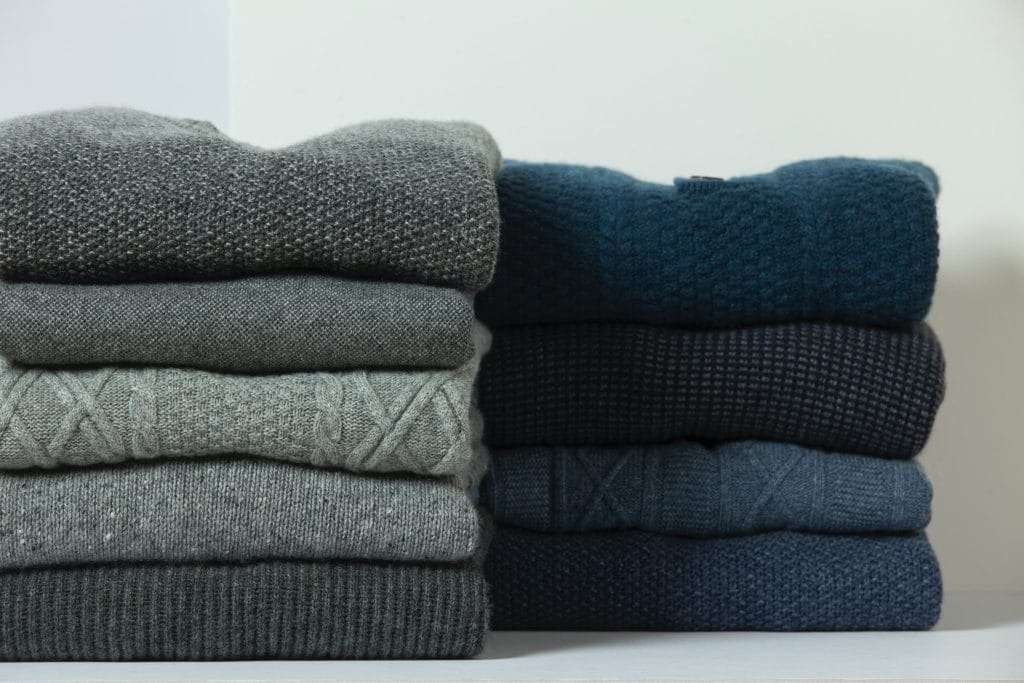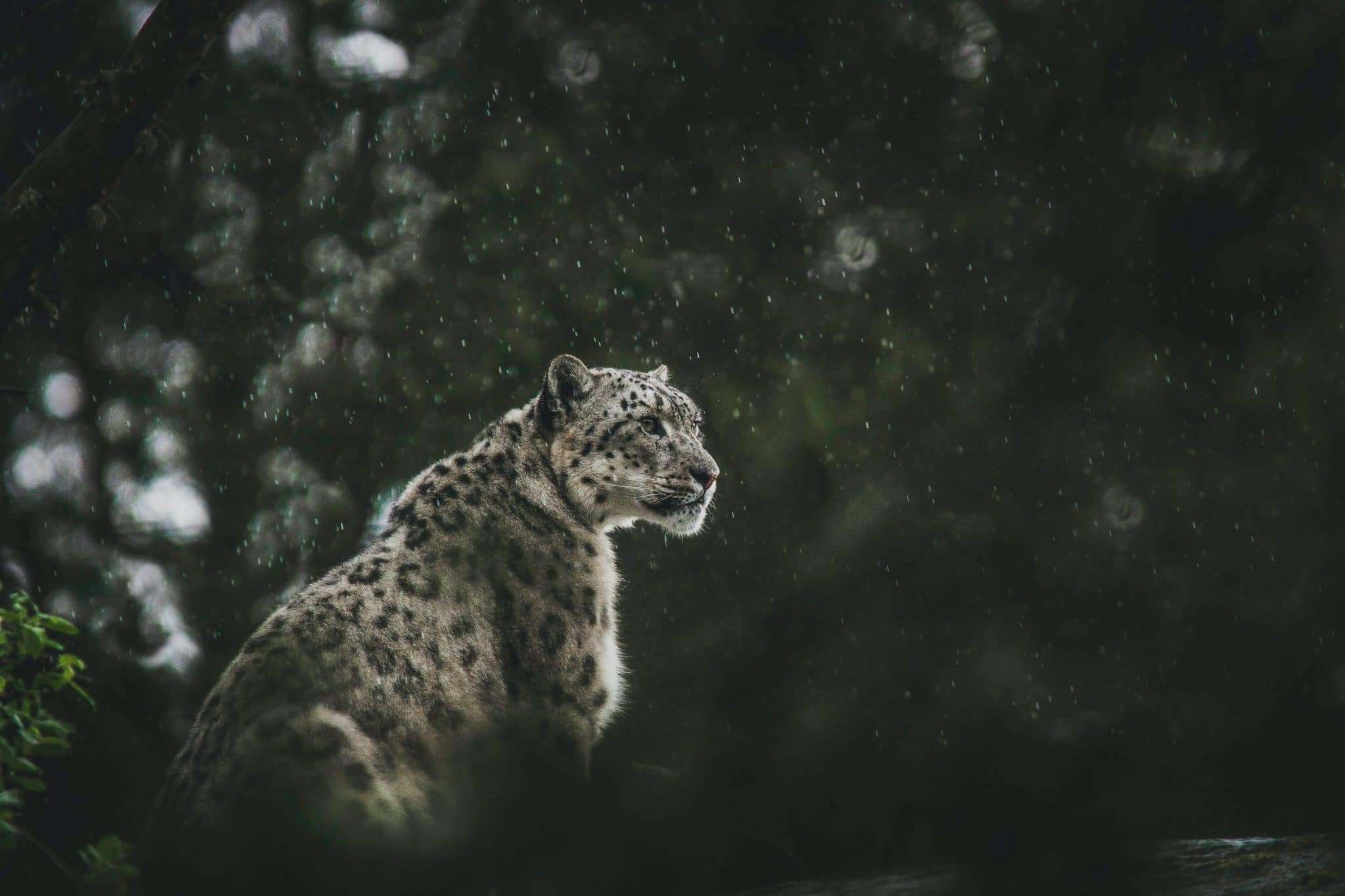Demand for cheap cashmere is putting pressure on snow leopards already facing a number of threats across Mongolia.
Snow leopards have always been elusive. They make their homes high up in the mountains across southern Russia to the Tibetan plateau — a fragmented territory that runs through 12 countries and spans more than 2 million kilometers. But the booming cashmere trade — a fiber once nearly as rare as the snow leopard itself — is now one of the key threats to the vulnerable species, according to a recent report.
Since the 1980s, the globalization of cashmere — the wool of Hircus cashmere goats — has more than doubled in production, commodifying the fiber and making it cheaper and in higher demand than ever. The cashmere market value is expected to exceed $3.5 billion by 2025 — up from $2.66 billion in 2018. Mongolia is the world’s second-largest cashmere producer after China.
But, according to wild cat conservation organization Panthera, the cashmere market is disrupting Mongolia’s ecosystem, putting greater pressure on the snow leopard than ever before. The research was published in the journal Biological Conservation.
Cashmere cashed in
Cashmere has long been synonymous with luxury. For decades, the soft, cozy “diamond fiber” brought a hefty price tag and mystique (Seinfeld did a whole episode about its allure in 1991’s The Red Dot). But in recent years, prices have dropped tremendously for cashmere, with fast fashion outlets selling “pure” cashmere sweaters and scarves for a tenth of the price they would have fetched just a few decades ago; H&M has sold cashmere sweaters for less than $100. Even the New York Times is pushing cheap cashmere. Last week, it published an article called We Tried Four Under-$100 Cashmere Sweaters. Here’s the One You Should Get.
Cashmere is so in demand that it now makes up roughly seven percent of the total luxury fashion market. The industry is getting a boost from celebrity-backed brands like Brad Pitt’s God’s True Cashmere, a luxury line of cashmere clothing he co-founded with Sat Hari, a jewelry designer and holistic healer. The founders say the yarns are sourced from various ethical goat farms. A God’s True Cashmere shirt will set you back more than $2,000.
Guest In Residence is a cashmere knitwear brand created by Creative Director and model Gigi Hadid. She says she’s sourcing biodegradable cashmere yarn from Inner Mongolia.
“I want clothes that feel sustainable and realistic to have for a long time,” she told Vogue last year. “If you look after cashmere correctly, it can last for decades.”
There are other brands, too, like Naadam, which says it’s working to support cashmere producers by working directly with the farmers and paying them higher prices.
But while there may be brands producing more ethical versions of cashmere than others, the downside is they all increase demand.
This demand has spiked production of cashmere — ethically produced or not. Herd sizes have grown five times the size of what they were in 1990; there are an estimated 30 million cashmere goats across Mongolia and 100 million in China. Just like Asia has adopted a preference for more expensive Western food (namely beef), the U.S. especially wants China’s more expensive cashmere wool.
“There’s been an absolute avalanche of people wanting more and more cashmere, and pushing the price, pushing the supply chain,” James Sugden OBE, a director of luxury cashmere clothing label, Brora, and former managing director of Scottish woolen mill, Johnstons of Elgin, told Business of Fashion. “It has created a problem, insomuch as in some areas, some growers, tempted by higher volumes have gone for volume rather than quality.”
And now, the Asian Development Bank (ADB) just announced a partnership with Gobi Joint Stock Company, providing a $30 million sustainability-linked loan and a $1 million technical assistance grant to bolster Mongolia’s cashmere industry. The funding will enable the procurement and processing of raw cashmere, while promoting what it says are sustainable practices like pasture and herd management, particularly in Khuvsgul and Bayankhongor provinces where climate change significantly impacts herders, causing extreme weather conditions and environmental challenges.

There are other programs underway to encourage responsible production and livable wages for the region’s farmers. Efforts like the U.K.-based Sustainable Fibre Alliance and the South Gobi Cashmere Project, which works with Gucci parent brand Kering (it also owns Balenciaga and YSL, among others) are notable, even if flawed. Kering is active in its sustainability efforts, most recently partnering with Cartier on a new initiative for watches and jewelry, and the recent launch of Gucci’s Demetra Horsebit bag. But, the challenges of cashmere production make it difficult to apply sustainable or ethical benchmarks to an industry that’s growing so fast and is expected to continue to see demand increase.
Cashmere’s spike also comes as other animal products are falling out of fashion. Ganni recently likened leather to cigarettes, promising to remove it from its collection by the end of this year. Last year, LVMH announced it’s working to develop lab-grown fur. Fur production has declined so drastically that the animal rights organization PETA, long known for its anti-fur stance, recently sunset its popular I’d Rather Go Naked Than Wear Fur campaign. That campaign ran for decades featuring celebrities including Taraji P. Henson, Alicia Silverstone, Pamela Anderson, Gillian Anderson, Wendy Williams, and Eva Mendes.
Still, brands continue to make the case for the cashmere industry under the banner of “sustainability” initiatives. But as demand increases, integrity is more often than not, the first casualty for the sake of volume.
“Lately, what has really worried us as a potential risk for the whole industry is the quantity approach,” Pier Luigi Loro Piana, deputy chairman of Italian fashion house Loro Piana, told Business of Fashion. “Quantity seems to be overtaking quality.”
Climate change vs. cashmere
Adding to the challenges of the cashmere industry is the very real threat of climate change. Mongolia has seen temperatures rise by 4°C since 1940 — more than double the average global temperature rise in that same period.
Climate change is also taking a toll on the vulnerable and elusive snow leopard. A 2015 WWF report warned that more than a third of the cat’s territory could become uninhabitable because of climate change.

“The Himalayas region will face a major crisis if we choose to ignore climate change. Not only do we risk losing majestic species such as the snow leopard, but hundreds of millions of people who rely on water flowing from these mountains may be affected,” WWF-U.K,’s Snow Leopard Programme Lead Rebecca May said.
And the added complications from the cashmere industry underscore the threats to the region.
Cashmere or snow leopards?
According to the study’s lead author, Marco Salvatori, PhD student at the University of Florence and MUSE (Museum of Sciences of Trento), the goal of the research was to understand if the increase in goatherds impacted the two large carnivores of the area, the snow leopard and the wolf, “and if they inhibited the presence of the Siberian ibex, the main prey of the snow leopard in these areas.”
More than 30 percent of China’s land is now pasture, and livestock farming specifically makes up 40 percent of the country’s gross domestic product. Livestock farming also attracts wolves. The researchers found that as goatherders attacked wolves to protect their herds, the wolves began to prey on ibex instead—the main source of food for snow leopards. This is pushing snow leopards to widen their hunting zones, which puts them at further risk of human-wildlife conflict, among other threats.
“Our results speak for themselves,” says coordinator Francesco Rovero, “widespread herding disturbs the snow leopard, an elusive feline adapted to prey on wild animals in steep terrain, pushing it to avoid the areas used by large herds of cattle, which are however increasingly widespread even within protected areas. On the contrary, the wolf seems to be attracted to pets and this generates the risk of conflicts with the shepherds.”
Snow leopards are the least understood of the big cats; their fragmented territories make it difficult to assess population numbers. Expert estimates are wide — some say only 4,500 remain but others estimate there could be 10,000 or more left in the wild. Either way, experts agree snow leopard numbers are on the decline.
But without fully understanding the threats the animals face, it’s difficult to make predictions about their survival or best recommendations to help protect the cats. According to Panthera, the Chinese government has made no effort to penalize herders from encroaching on the protected snow leopard habitat areas.
“For the future, in order not to risk compromising the fragile biological equilibrium, it will be important to favor breeding practices that are more compatible with the long-term survival of the large mammals of the mountains of Central Asia,” says Rovero.
Experts have been sounding the alarm about snow leopard health for a decade, though. In 2013, research published in the journal Conservation Biology found snow leopards were already “on the margins.”
“In the absence of commitment across global and local scales, this iconic wildlife will cease to persist as they have for millennia,” the researchers noted. “Rather than serving as symbols of success, these species will become victims of fashion.”
Related on Ethos:


